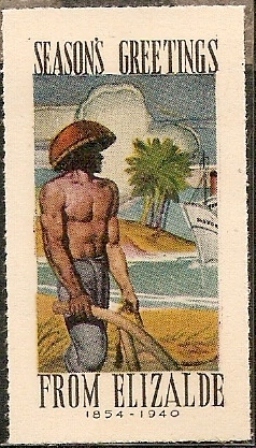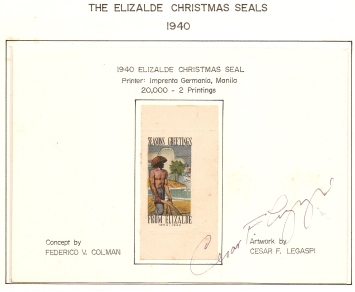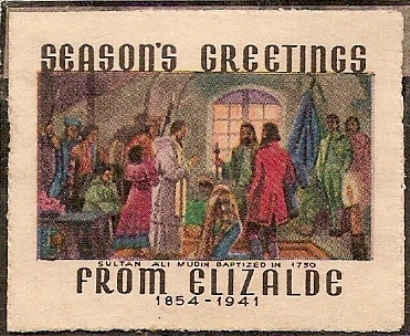-
Anti-TB Semi-Postal Stamps of the Philippines
-
Christmas Stamps of the Philippines
THE 1940-1941 ELIZALDE CHRISTMAS SEALS
Elizalde & Company, Inc. briefly described itself as “importers & exporters and general merchants & manufacturers. Established in 1854, it was engaged, through the 14 subsidiary companies that it managed, in paint manufacture, distillery, shipping, rope production, lumber, mining, cattle-raising, milling and insurance.
The 1940 Christmas Seals

1940 - Farm Scene - Regular issue, and, Rouletted copy, with right selvage intact, autographed by Cesar F. Legaspi, stamp designer
In 1940, upon the suggestion of some of its executives and staff officers, the company decided to issue its own Christmas seal, the “first private Christmas seal of the Philippines”. For this purpose, it conducted a seal design contest from July to October 1940, offering P50.00 (a comfortable amount during those days when the minimum monthly wage was P30.00) for the best design, sketch or idea of a Christmas seal. This was won by Federico V. Colman of Manila. Artwork was drawn by Cesar F. Legaspi, a staff artist of Elizalde (1917 - 1994, declared national artist for visual arts in 1990). The design was symbolic of agriculture and commerce in the Philippines, and portrayed a Filipino farmer plowing the field, with coconut palms in an island and the prow of S.S. Mayon, the “queen of Philippine seas” owned by the Manila Steamship Co., in the background.
This was printed by Imprenta Germania, Legarda, Manila, in horizontal panes measuring 165 x 76 mm, with five 21 x 45 mm seals per pane. There were two printings of 10.000 seals each. First day of issue was December 27, 1940. The seals were given away free to the public upon request.
The 1941 Christmas Seals
1941 - Baptism of Sultan Ali Mudin of Jolo in 1750
Because of the enthusiastic response to the 1940 seals, Elizalde & Co., decided to issue another Christmas seal for 1941. The design featured the baptism of Sultan Ali Mudin of Jolo in 1750. The company stressed that the underlying theme was “Gratitude”, because this event “marked the beginning of better understanding between Christians and Mohammedan Filipinos”. This appreciation extended to the “paving of Philippine-Spanish cooperation in building trade and commerce for three centuries” and the “last forty-three years of Philippine-American collaboration and friendship”.
The design was drawn by Manila artist, Victor Loyola, and printer presumably was the same printer of 1940. Mintage was 20,000 seals in vertical panes measuring 64 x 212 mm, with five 38 x 30 mm seals per pane. There is a little known variety, with the man in foreground wearing an orange coat, instead of red. Distribution, likewise free, was overtaken by the outbreak of the Pacific War. Which probably explains why the 1941 issue is more difficult to secure than 1940.
In 1981, author wrote Elizalde & Co., requesting for more information, and possible some samples of the seals. A vice-president courteously replied “that we are deeply sorry, however, that we cannot provide you with a spare or even a xerox copy of the said seal in view of a fire that struck our records many years ago. We have no way of tracing back where those seals might be now, if there are still available, and there seems to be nobody in our company who remembers them.”
(With basic data quoted or culled from The Elizalde Stamp Journal issues of Jul-Aug-Sep 1940, Oct-Nov-Dec 1940, Jan-Feb-Mar 1941 and Jul-Aug-Sep 1941).

